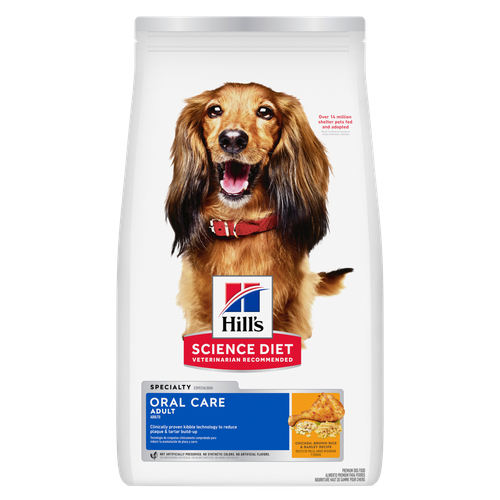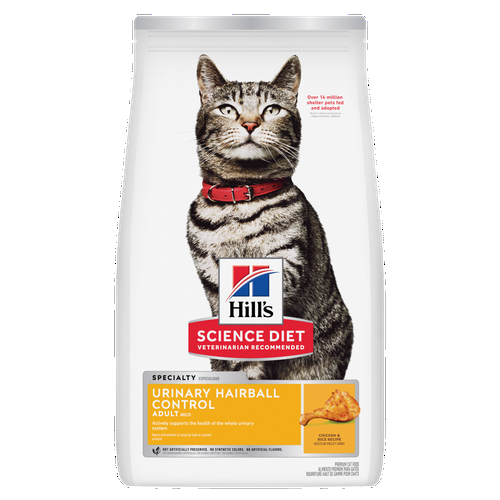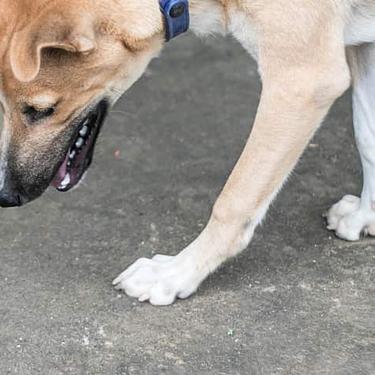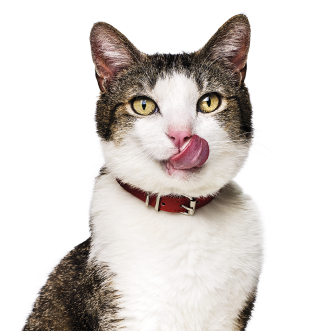
-
Find the right food for your petTake this quiz to see which food may be the best for your furry friend.Find the right food for your petTake this quiz to see which food may be the best for your furry friend.Featured products
 Adult Small & Mini Lamb Meal & Brown Rice Recipe Dog Food
Adult Small & Mini Lamb Meal & Brown Rice Recipe Dog FoodFor the faster metabolism of Small & Mini dogs
Shop Now Adult 7+ Small & Mini Chicken & Brown Rice Recipe Dog Food
Adult 7+ Small & Mini Chicken & Brown Rice Recipe Dog FoodFor the unique nutritional needs of mature Small & Mini dogs
Shop Now Hill's Science Diet Adult Oral Care Chicken, Brown Rice & Barley Recipe Dog Food
Hill's Science Diet Adult Oral Care Chicken, Brown Rice & Barley Recipe Dog FoodClinically proven kibble technology to reduce plaque & tartar build-up
Shop NowFeatured products Adult Urinary Hairball Control Chicken & Rice Recipe Cat Food
Adult Urinary Hairball Control Chicken & Rice Recipe Cat FoodActively supports the health of the whole urinary system
Shop Now Hill's Science Diet Adult Sensitive Stomach & Skin Dog Food
Hill's Science Diet Adult Sensitive Stomach & Skin Dog FoodHighly digestible recipe, gentle on stomachs. Nourishes skin & promotes a lustrous coat
Shop Now Adult Indoor Chicken Recipe Cat Food
Adult Indoor Chicken Recipe Cat FoodSupports energy level and beautiful fur in indoor cats
Shop Now -
Featured articles
 My Pet Ate a Lizard — What Should I Do?
My Pet Ate a Lizard — What Should I Do?Learn what to do if your pet eats a lizard, including whether they can be toxic and symptoms to keep an eye on when they've swallowed one.
Read More 15 Pet-Friendly Cities Ideal for a US Road Trip
15 Pet-Friendly Cities Ideal for a US Road TripCheck out our list of pet-friendly U.S. cities that are excellent travel options, offering off-leash dog parks and pet-friendly restaurants & hotels.
Read More Easy DIY Dog & Cat Toys: Nine of Our Favorites
Easy DIY Dog & Cat Toys: Nine of Our FavoritesBrowse this comprehensive guide for several of our favorite DIY dog and cat toys that are sure to put a little pep in your pet's step.
Read More -


Brushing your cat’s teeth regularly is an essential component to maintaining a healthy lifestyle for her. Nearly 90 percent of cats develop dental problems over their lifetime. Just like us, they can develop gum disease, tartar and plaque build-up, foul breath, and abscesses, all of which can develop into infection and tooth loss. With proper feline dental care and the right type of food, you can help take action against these problems.
As a carnivore, your cat needs to have clean, strong, sharp teeth. Unfortunately, many cats aren’t provided an adequate food for conditioning their teeth. Hill's® Science Diet® Adult Oral Care cat food contains fiber to reduce plaque and tartar build-up, unique kibble technology for clean teeth and fresh breath, and other essential nutrients to your cat’s overall health.
If your cat has a tooth problem, it may take a while for you to find out. One reason is that cats instinctively hide their pain as a response to not appear vulnerable to predators, so it may take you awhile to figure out that she’s hurting. If she hides more than usual, refuses to sleep, or becomes more aggressive, this could indicate that she’s experiencing tooth pain.
The Problem With Plaque on Your Cat’s Teeth
Plaque is the film you feel on your teeth when you wake up each morning, formed by saliva, bacteria and food particles. Plaque can quickly turn into tartar, a hard yellowish deposit on the teeth. It can also cause gum infection (gingivitis), which is the first stage of periodontal disease. Some 70 percent of cats have periodontal disease by the time they turn two, but other types of gum disease can occur earlier. Bacteria from plaque accumulation can cause infection in the lungs, liver, kidney and heart.
Check for Tell-Tale Signs of Feline Dental Concerns
Between vet visits, be sure to check your cat for these important warning signs:
- Bad breath: an unusually strong odor may suggest digestive problems or a dental condition
- Bleeding or a dark red line along the gums
- Gum inflammation: swollen gums can lead to gum disease, tooth loss, inability to eat, and can be a sign of kidney disease or feline immunodeficiency virus
- Ulcers on the gums
- Excessive drooling or pawing at the mouth area
- Difficulty chewing food or refusal to eat
Take your cat to the vet immediately if you notice any of these warning signs. Your vet may recommend a professional dental cleaning, which begins with blood work to determine if she’s healthy enough to undergo anesthesia. If she is, your vet will administer anesthesia and begin a comprehensive cleaning. This includes:
- A complete oral exam and x-rays to identify problems under the gum line
- A full cleaning under the gum line to prevent periodontal disease
- Professional scaling to remove plaque and tartar build-up on the crown
- Polishing the teeth to prevent plaque and bacteria


Tasty Tips
How to Brush a Cat’s Teeth at Home
The gold standard for cat oral care at home is brushing. Here are some tips for getting started:
- Get your cat used to the idea of having her teeth brushed. Keep the sessions short and positive. Gently massage her gums with your finger or a cotton swab.
- Use a toothbrush designed especially for cats; it’s smaller than a human toothbrush and has softer bristles. Toothbrushes that you can wear over your finger are also available.
- Use toothpaste designed for cats; using your own toothpaste can cause distress and upset your cat’s stomach.
- If your cat has inflamed gums, brushing her teeth too hard might be painful. Visit the vet for a quick check-up before you begin brushing.
Also, be sure to reward your cat for being so patient while you brush her teeth with either a treat or play. This will let her know that she did a good job, as well as help make future brushings easier on you both.
Alternatives to Brushing Your Cat’s Teeth
In addition to brushing your cat’s teeth, you can take other actions to ensure that she keeps her pearly whites clean. Chew toys and oral gels, along with specifically formulated dental treats and food can slow the formation of tartar and avoid the onset of dental disease.


One of our staff authors prepared this article for you
Related products
Related articles

Put your cat on a diet without them knowing
Our low calorie formula helps you control your cat's weight. It's packed with high-quality protein for building lean muscles, and made with purposeful ingredients for a flavorful, nutritious meal. Clinically proven antioxidants, Vitamin C+E, help promote a healthy immune system.
Put your cat on a diet without them knowing
Our low calorie formula helps you control your cat's weight. It's packed with high-quality protein for building lean muscles, and made with purposeful ingredients for a flavorful, nutritious meal. Clinically proven antioxidants, Vitamin C+E, help promote a healthy immune system.

